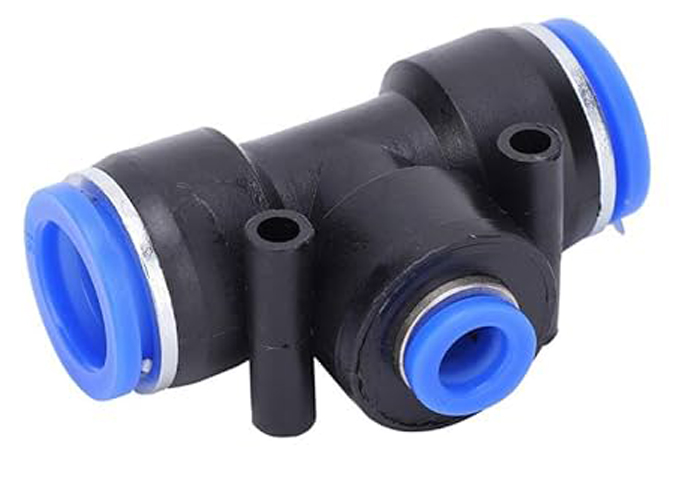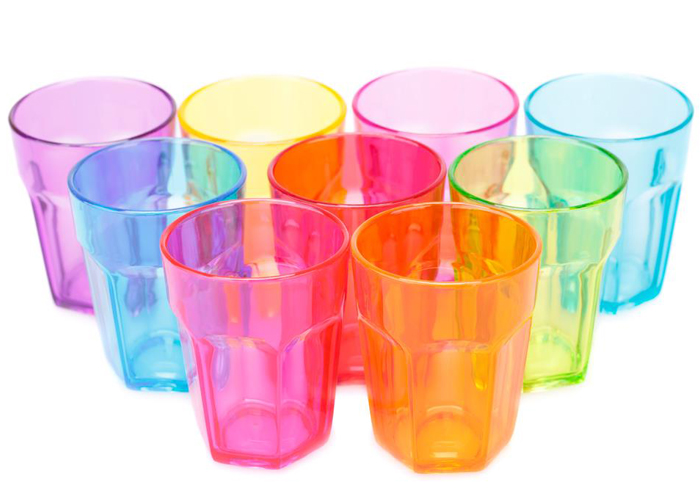
- +8615880211820
- [email protected]
- Tongan Industry Park, Xiamen
Blue masterbatch is a concentrated colorant used in the plastics industry to create vibrant blue hues across a wide range of products. Made from a blend of pigments, additives, and a polymer carrier, it ensures consistent color distribution and customization options in manufacturing. Common applications include packaging, automotive parts, construction materials, and consumer goods. Key pigments, like phthalocyanine and ultramarine blue, are chosen for their durability and brightness.
Benefits of blue masterbatch include color consistency, cost efficiency, and eco-friendly options that comply with regulatory standards. When selecting a supplier, it’s essential to look for quality assurance, industry certifications, and customer support. As environmental concerns grow, sustainable innovations, such as biodegradable and recyclable options, are shaping the future of blue masterbatch.
Blue masterbatch is a concentrated mixture of pigments and additives encapsulated in a carrier resin, used to color plastics during manufacturing. It offers a precise and consistent way to add vibrant blue hues to plastic products across various industries, from packaging to automotive components.
To create high-quality blue masterbatch, manufacturers combine pigments with a polymer carrier and additives. Common pigments include phthalocyanine blue and ultramarine blue, which provide intense color and UV stability. The carrier resin, typically similar to the final product’s base polymer, ensures easy dispersion and compatibility.
The production process begins with mixing pigments, additives, and the carrier resin. This blend is then heated, extruded, and cooled, resulting in granules or pellets that can be easily added to plastics during molding or extrusion.
Blue masterbatch is widely used in the packaging sector, offering aesthetically pleasing colors that enhance brand visibility and product appeal. It’s commonly found in food and beverage containers, ensuring a visually consistent look across batches.
In the automotive industry, blue masterbatch adds color to interior and exterior plastic parts. Its UV-stabilizing properties make it ideal for outdoor applications, providing durability against sun exposure. In construction, it’s used in pipes, fittings, and panels to create a distinctive, lasting appearance.
From household items to electronics, blue masterbatch is applied in various consumer products. Its versatility allows manufacturers to achieve custom shades of blue, meeting both aesthetic and functional requirements.
Blue masterbatch ensures that color is evenly dispersed, providing uniform appearance across large production runs. This reduces the likelihood of color variations, making it a preferred choice for brands that rely on visual consistency.
By using masterbatch instead of pre-colored plastic, manufacturers can reduce costs. Masterbatch pellets are added at the beginning of the production process, saving time and labor while still achieving high-quality color.
One of the key advantages of blue masterbatch is the ability to create specific color shades tailored to the brand’s needs. Whether it’s a bold cobalt or a lighter pastel blue, masterbatch formulations can be adjusted to meet any requirement.
Phthalocyanine blue is a popular choice for its brightness and color stability, ideal for applications requiring vivid, long-lasting color. It also offers excellent lightfastness, making it resistant to fading.
Known for its unique, vibrant tone, ultramarine blue is favored in applications where a slightly warmer blue hue is desired. It’s also non-toxic and eco-friendly, suitable for food-grade applications.
As sustainability becomes a priority, blue masterbatch formulations are adapting. Many suppliers now offer eco-friendly, non-toxic options that comply with regulations for safe use in food packaging and children’s toys. Opting for environmentally conscious blue masterbatch not only meets regulatory standards but also supports responsible manufacturing.
Look for suppliers who maintain strict quality control and use high-grade pigments and additives. A reliable supplier should also offer consistency between batches, ensuring that your products maintain their visual quality.
For industries like food and healthcare, ensure the supplier adheres to industry standards and holds relevant certifications. Check for compliance with local and international regulations on colorants and additives.
A supplier with excellent customer support can provide assistance with selecting the right masterbatch for your needs, as well as technical support to ensure optimal results in production.
With growing environmental awareness, the industry is exploring sustainable options, including biodegradable masterbatches and those enhancing recyclability. The future of blue masterbatch is likely to feature more eco-friendly choices, as manufacturers focus on reducing environmental impact while maintaining color quality and durability.
Blue masterbatch plays a crucial role in coloring and enhancing plastic products across industries. From its consistent color dispersion to customization options and environmental adaptability, blue masterbatch remains a valuable component in modern plastic manufacturing. By understanding its benefits, applications, and selecting the right supplier, manufacturers can leverage blue masterbatch for high-quality, vibrant products that meet industry standards and customer expectations.
Our company is over 20 years in plastic masterbatch industry, we specialize in researching and produce all kinds of Color masterbatches, functional masterbatch, fiberglass reinforced plastics and burning resistant plastic raw materials, located in Tong’an Industry Park of Xiamen City in China.
In conclusion, we are professional in producing all kinds of plastic masterbatch, including additive master-batch, functional masterbatch, PE flame retardant masterbatch, ABS flame retardant masterbatch, Anti-Oxygen masterbatch, Anti-UV masterbatch, Anti-bacterial masterbatch, Antiblock masterbatch, and some other additive masterbatches.


Our masterbatches find a multitude of applications across diverse industries. Whether in plastics, textiles, or various manufacturing processes, our masterbatches play a pivotal role in enhancing product quality and performance. With customizable formulations, they offer color consistency, UV protection, flame resistance, and more, making them the go-to solution for countless applications. From automotive parts to packaging materials, our masterbatches are the trusted choice for achieving superior results across a wide spectrum of industries.
Our custom masterbatches are designed to match specific polymers, ensuring optimal performance when incorporated into your selected material. We have the capability to produce masterbatches suitable for a variety of polymers mentioned below, and many more. If you’re working with a material that isn’t listed here, please don’t hesitate to reach out to our knowledgeable technical team to explore the possibility of meeting your specific needs.

Low Density Polyethylene – Somewhat more translucent than HDPE and considerably more pliable, primarily employed in flexible packaging, tote bags, pliable tubing, film applications, and similar uses. Like HDPE, it has limited transparency characteristics. It exhibits outstanding chemical resistance to alcohols, acids, and alkalis but has restricted resistance to hydrocarbon solvents and mineral oils. Prolonged exposure to UV radiation can initiate degradation.
High-Density Polyethylene – Featuring a somewhat milky-white appearance, this material finds wide application in rigid bottle packaging, injection-molded caps and closures, crates, and more. Its natural opacity can limit the degree of transparency attainable. HDPE exhibits superior chemical and solvent resistance when compared to LDPE.


PPCO Random & PPHO – A polymer with moderate clarity, employed in the production of caps and closures. It is also utilized for crafting household items, buckets, toys, and storage containers. Polypropylene offers flexibility without significant limitations on color or special effects. Random copolymer boasts greater clarity compared to homopolymer and is better suited for creating translucent shades.
PPCO Block – Similar to PPCO but enhanced for increased impact resistance. An additive renders the polymer white, resulting in high opacity. This characteristic may limit the achievable transparency.
Polyethylene Terephthalate (PET) – Polyester materials exhibit robust mechanical strength along with excellent chemical resistance and barrier properties. PET is frequently chosen for the production of carbonated beverage containers. Moreover, polyester can be spun and employed in textile manufacturing for clothing. PET is highly transparent, making it an excellent choice for translucent packaging, although a subtle hint of “yellowing” may impact extremely light tints.


Polybutylene Terephthalate – A crystalline thermoplastic engineering polymer frequently employed as an insulating material within the electronics sector. This substance belongs to the polyester category, showcasing a remarkable equilibrium of attributes and processing qualities.
General Purpose Polystyrene – Exhibiting a glass-clear appearance but possessing minimal impact resistance, this material finds its primary application in CD cases. Its notable clarity renders it suitable for creating translucent hues, although an occasional violet tint may be discernible.


High Impact Polystyrene – Derived from GPPS by incorporating an impact-enhancing agent to boost its resistance to impacts. This added component results in the polymer becoming white, and different formulations provide varying degrees of opacity. Typically employed in the fabrication of game pieces, toys, and similar items. Its pronounced whiteness can pose challenges when aiming for translucent coloration. Specialized alternatives like K-Resin and Styrolux are accessible in the market to attain the same level of translucency as GPPS.
Acrylonitrile Butadiene Styrene (ABS) – A more robust iteration of High Impact Polystyrene (HIPS) employed in high-value components. ABS exhibits greater durability compared to HIPS-made components, although it encounters similar challenges when attempting to achieve translucent colorations. Just like HIPS, ABS offers specialized translucent variants. Owing to its durability, ABS is commonly used in crafting casings for power tools.


Polyamide (6, 66) – Nylon represents a versatile grade extensively employed in mechanical construction and maintenance. Its popularity stems from its excellent blend of mechanical strength, rigidity, mechanical damping characteristics, and effective electrical insulation capabilities. Consequently, nylon is a preferred material for manufacturing electrical enclosures. PA66 serves as a common alternative to metal across diverse applications, with its chemical and physical attributes closely resembling those of PA6. PA6 exhibits superior impact resistance and resistance to solvents, albeit with a heightened susceptibility to moisture absorption.
Styrene Acrylonitrile Copolymer – Possessing transparency and outstanding chemical and heat resistance, SAN also boasts good rigidity, tensile strength, and flexural strength. Thanks to its high-gloss finish, SAN is commonly chosen for cosmetic packaging purposes. However, achieving light tint colors with SAN can be challenging due to the violet dyestuffs inherent in the material, which are utilized to enhance its visual appearance during manufacturing.


Polyethylene Terephthalate Glycol – PET with the incorporation of glycol. This glycol addition enhances flow properties but diminishes strength. PETG can be extruded to create bottles and can be formed into sheets for producing ‘blister’ style packaging.
Thermoplastic Elastomer (TPE) or Thermoplastic Polyurethane (TPU) – TPU finds diverse uses in applications such as automotive instrument panels, caster wheels, power tools, medical devices, as well as various extruded film, sheet, and profile applications. TPEs are employed across a wide range of applications in industries spanning automotive, medical, construction, electrical, appliances, packaging, and industrial sectors.

Frequently asked questions about our masterbatch
©2023. Masterbatch Manufacturer All Rights Reserved.
Our team will send back the best offer in 20 minutes.